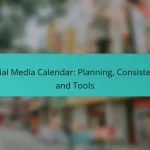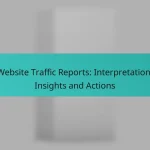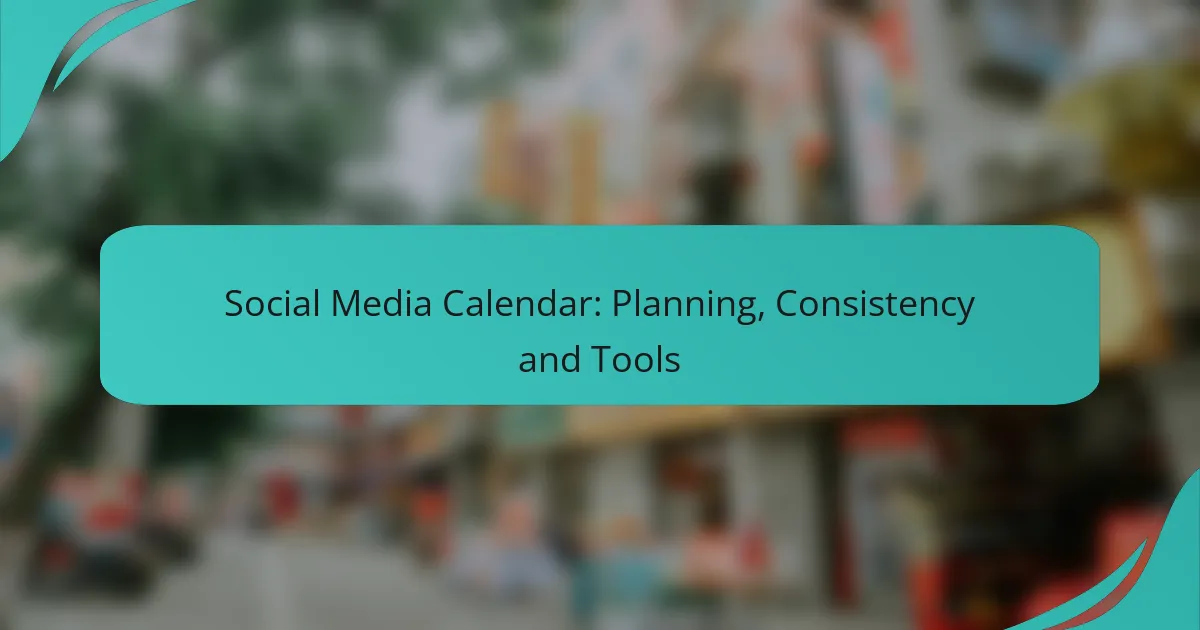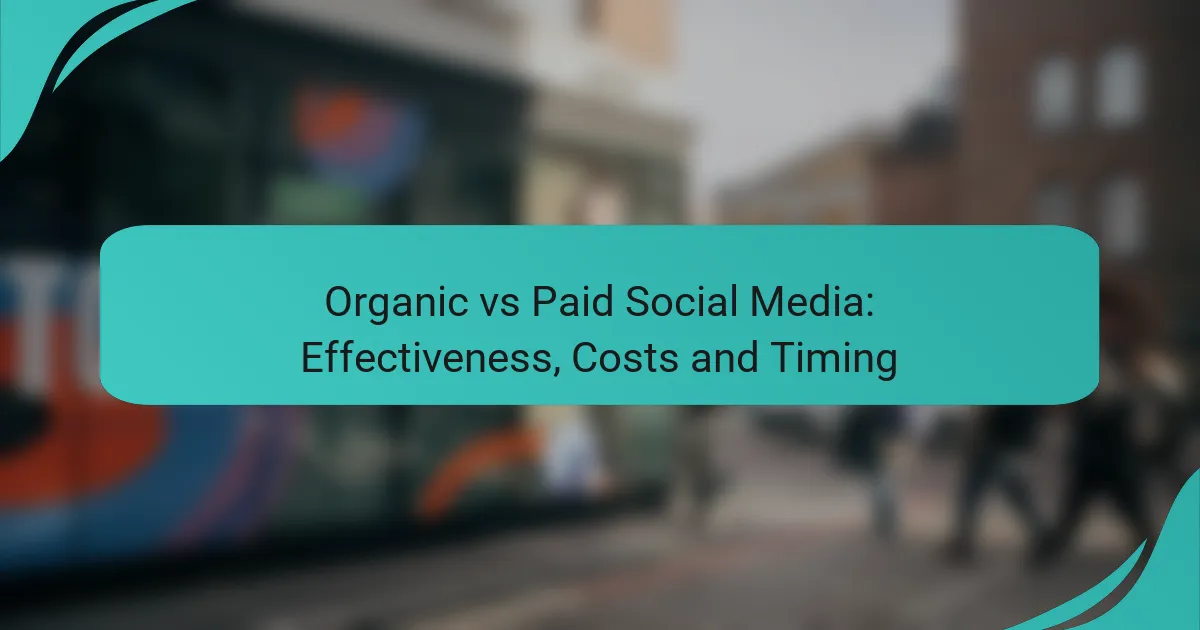A social media calendar is essential for planning content in advance, ensuring consistency and alignment with marketing goals. By streamlining your posting schedule, it enhances the management and analysis of your social media efforts. Utilizing the right tools can further improve efficiency, making it easier to maintain a reliable presence that fosters audience trust and engagement.

How to create a social media calendar?
Creating a social media calendar involves planning your content in advance to ensure consistency and alignment with your marketing goals. A well-structured calendar helps streamline your posting schedule, making it easier to manage and analyze your social media efforts.
Define your goals
Start by clearly defining your social media goals, such as increasing brand awareness, driving website traffic, or generating leads. Each goal should be specific, measurable, achievable, relevant, and time-bound (SMART) to guide your content strategy effectively.
For example, if your goal is to boost engagement, aim for a specific percentage increase in likes or shares over a defined period. This clarity will help you tailor your content to meet those objectives.
Choose your platforms
Select the social media platforms that best align with your target audience and content type. Popular options include Facebook, Instagram, Twitter, LinkedIn, and TikTok, each serving different demographics and purposes.
Consider where your audience spends their time. For instance, if you are targeting professionals, LinkedIn might be more effective than Instagram. Focus your efforts on 2-3 platforms to maintain quality and consistency.
Determine content types
Identify the types of content you will share, such as blog posts, videos, infographics, or user-generated content. Each type serves different purposes and can engage your audience in unique ways.
For example, video content often garners higher engagement rates, while infographics can simplify complex information. Mix various formats to keep your audience interested and cater to different preferences.
Set a posting frequency
Establish a consistent posting frequency that suits your audience and platform. A common guideline is to post at least once a day on platforms like Instagram and Facebook, while LinkedIn may require fewer posts per week.
Monitor engagement metrics to adjust your frequency as needed. Avoid overwhelming your audience with too many posts, which can lead to decreased engagement.
Use templates for organization
Utilize templates to organize your social media calendar efficiently. Tools like Google Sheets or specialized software can help you create a visual layout of your planned posts, including dates, content types, and platforms.
Templates can streamline the planning process and ensure you cover all necessary details, such as captions and hashtags. Regularly updating your template will help you stay on track and make adjustments as needed.
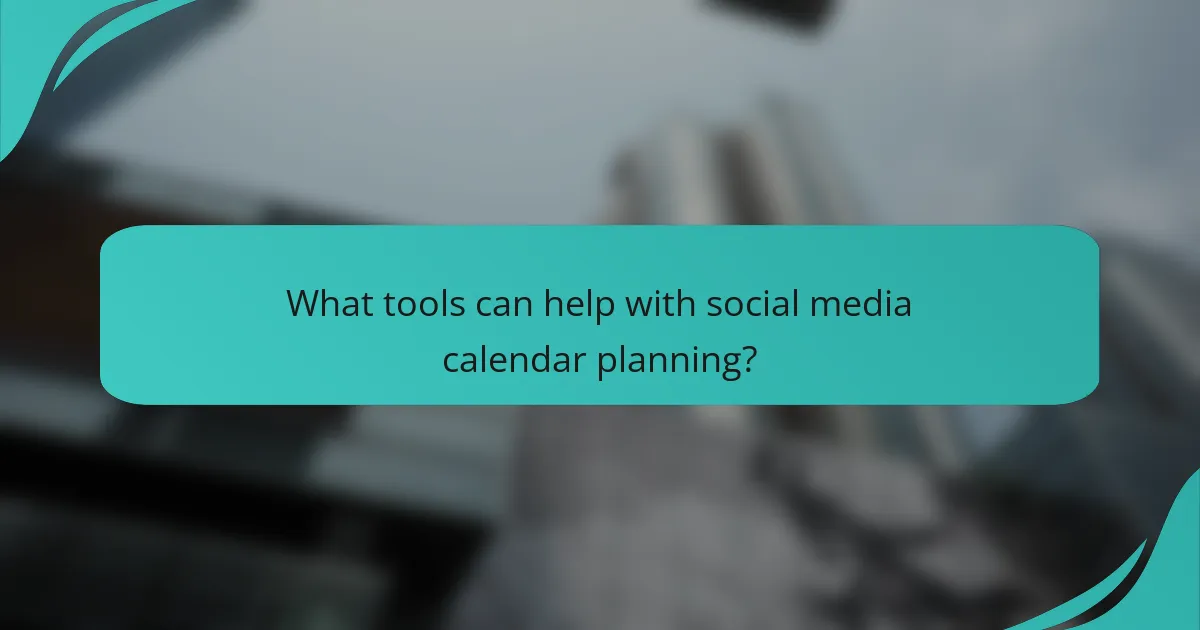
What tools can help with social media calendar planning?
Several tools can streamline social media calendar planning, enhancing scheduling, analytics, collaboration, and task management. Utilizing the right tool can improve consistency and efficiency in your social media strategy.
Hootsuite for scheduling
Hootsuite is a popular platform for scheduling social media posts across various networks. It allows users to plan content in advance, ensuring a steady flow of posts without the need for real-time management.
With Hootsuite, you can set specific times for posts to go live, which helps maintain consistency. The platform supports multiple social media accounts, making it ideal for businesses managing diverse channels.
Buffer for analytics
Buffer excels in providing analytics that help you measure the performance of your social media posts. It offers insights into engagement rates, click-through rates, and audience demographics, allowing you to refine your strategy based on data.
By analyzing trends over time, Buffer enables users to identify which types of content resonate most with their audience. This data-driven approach can lead to more effective content planning and scheduling.
CoSchedule for collaboration
CoSchedule is designed for teams, facilitating collaboration on social media calendars. It allows multiple users to contribute ideas, schedule posts, and track progress, ensuring everyone is aligned on content strategy.
This tool features a drag-and-drop calendar interface, making it easy to visualize your social media schedule. CoSchedule also integrates with various marketing tools, enhancing overall workflow efficiency.
Trello for task management
Trello is an excellent tool for managing tasks related to social media planning. Its board and card system allows users to organize tasks, set deadlines, and assign responsibilities, making it easy to track progress.
Using Trello, you can create a dedicated board for your social media calendar, adding cards for each post idea or campaign. This visual approach helps teams stay organized and ensures that no tasks fall through the cracks.
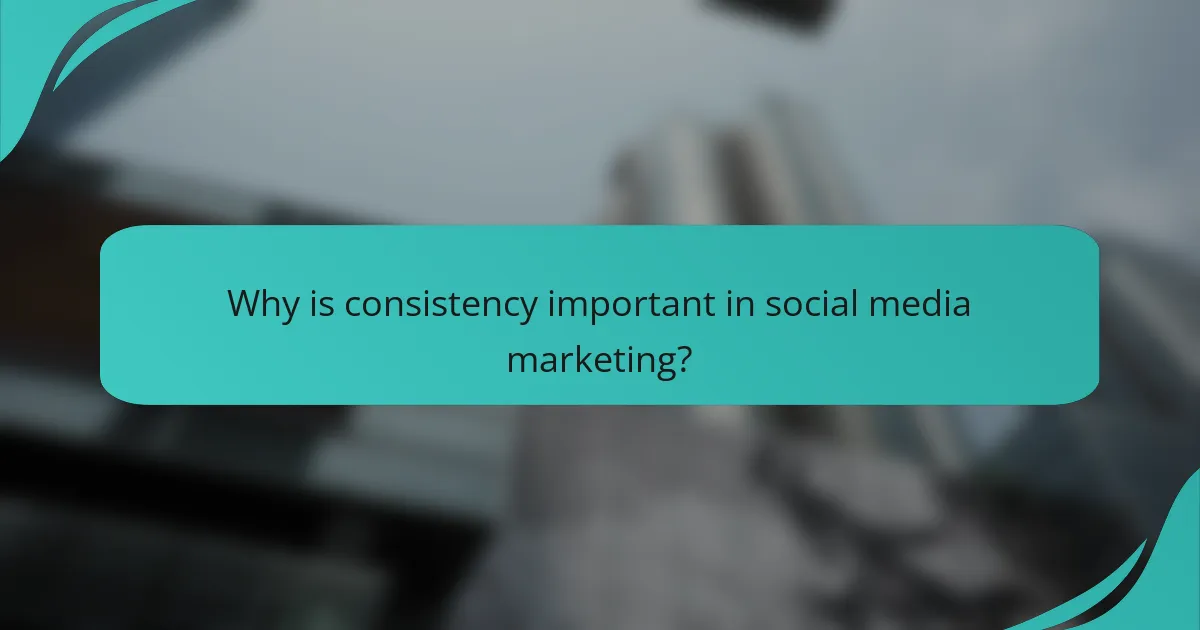
Why is consistency important in social media marketing?
Consistency in social media marketing is crucial as it helps maintain a reliable presence that audiences can trust. Regular posting schedules and cohesive messaging foster familiarity, which can lead to increased loyalty and engagement from followers.
Builds audience trust
Consistent posting helps establish credibility with your audience. When followers see regular updates, they are more likely to perceive your brand as reliable and authoritative. This trust can be further enhanced by maintaining a uniform tone and style across all platforms.
To build trust effectively, consider creating a content calendar that outlines your posting schedule and themes. This approach ensures that your audience knows when to expect new content, reinforcing their confidence in your brand.
Improves engagement rates
Regularly sharing content keeps your audience engaged and encourages interaction. When followers see consistent posts, they are more likely to comment, share, and react, which can boost your visibility on social media platforms.
To enhance engagement, aim for a posting frequency that suits your audience’s preferences, typically ranging from a few times a week to daily. Monitor engagement metrics to identify the best times and types of content that resonate with your followers.
Enhances brand recognition
Consistency in social media marketing strengthens brand recognition by reinforcing your visual identity and messaging. When your audience encounters familiar logos, colors, and themes, they are more likely to remember your brand.
To improve brand recognition, ensure that your branding elements are consistently applied across all social media channels. Use similar graphics, captions, and hashtags to create a cohesive brand image that stands out in users’ feeds.
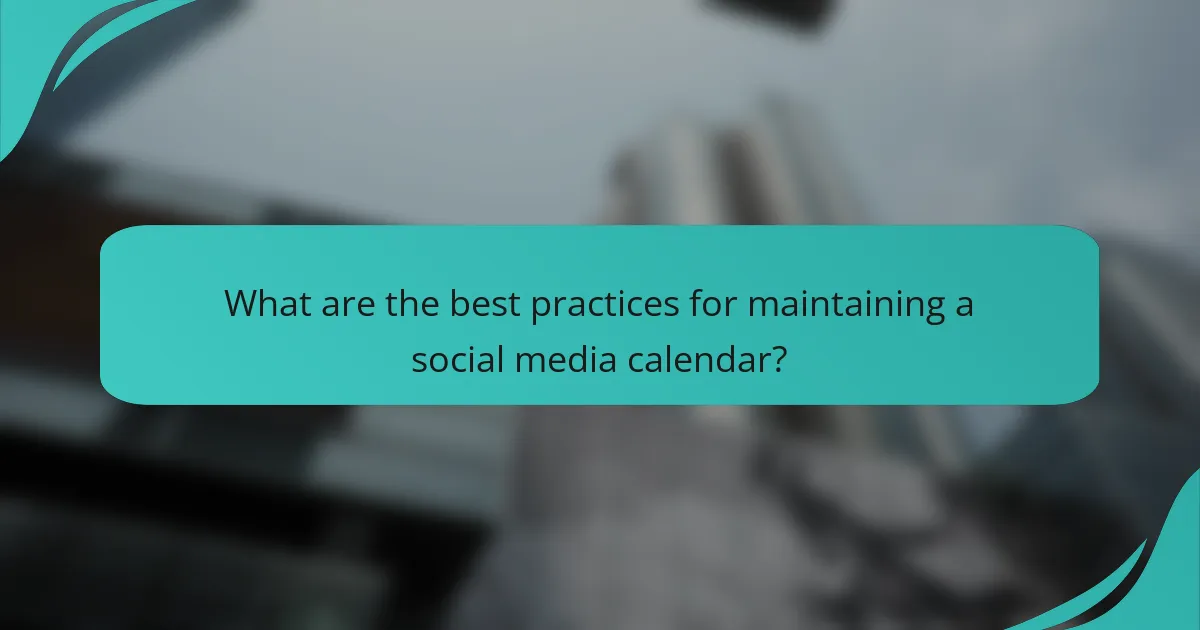
What are the best practices for maintaining a social media calendar?
Maintaining a social media calendar involves consistent planning, regular updates, and strategic adjustments based on performance metrics. By adhering to best practices, you can enhance engagement and ensure your content aligns with your audience’s interests.
Regularly review performance
Regular performance reviews are essential for understanding how your social media content is resonating with your audience. Analyze metrics such as engagement rates, reach, and conversion rates at least monthly to identify what works and what doesn’t.
Consider creating a performance dashboard that consolidates these metrics for easy access. This can help you visualize trends over time and make informed decisions about future content strategies.
Adjust based on analytics
Adjusting your social media calendar based on analytics is crucial for optimizing your content strategy. Use insights from your performance reviews to tweak posting times, content types, and messaging to better align with audience preferences.
For instance, if video content has a higher engagement rate than images, consider increasing the frequency of video posts. Aim for a balance that reflects your audience’s interests while maintaining your brand voice.
Incorporate seasonal trends
Incorporating seasonal trends into your social media calendar can significantly boost engagement. Plan content around holidays, events, and seasonal themes that resonate with your target audience.
For example, if you operate in the retail sector, consider creating promotional campaigns for Black Friday or back-to-school season. Use a content calendar to map out these seasonal posts well in advance, ensuring timely delivery and relevance.
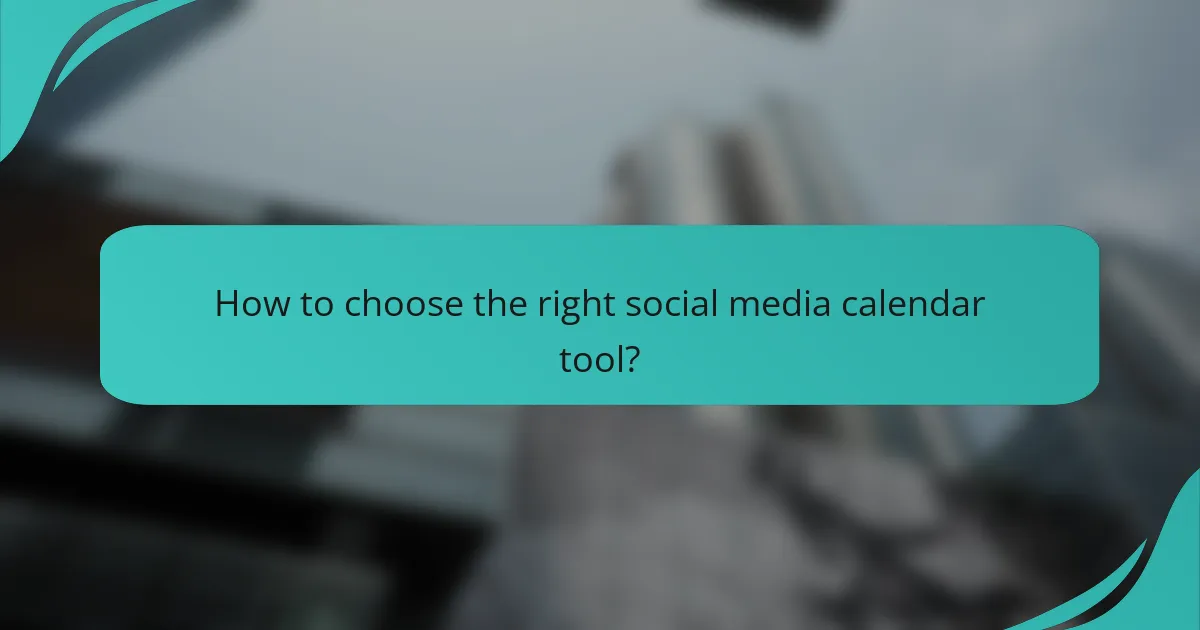
How to choose the right social media calendar tool?
Selecting the right social media calendar tool involves understanding your team’s needs, budget, and the ability to integrate with existing systems. A well-chosen tool enhances collaboration, streamlines processes, and ensures consistent content delivery across platforms.
Assess team collaboration needs
Begin by evaluating how your team collaborates on social media projects. Consider factors such as the number of team members involved, their roles, and how they communicate. Tools that offer features like shared calendars, comment sections, and task assignments can significantly improve teamwork.
For instance, if your team is large and works remotely, look for tools that support real-time collaboration and version control. This ensures everyone stays on the same page and reduces the risk of miscommunication.
Evaluate budget constraints
Your budget will play a crucial role in selecting a social media calendar tool. Prices can vary widely, from free options with basic features to premium tools that offer advanced functionalities. Determine what features are essential for your team and find a balance between cost and capability.
Consider allocating a monthly budget for tools that can enhance productivity. Many tools offer tiered pricing plans, so you can start with a basic plan and upgrade as your needs grow. Look for options that provide a free trial to assess their value before committing financially.
Consider integration with other tools
Integration capabilities are vital when choosing a social media calendar tool. Ensure that the tool can seamlessly connect with other platforms your team uses, such as content management systems, analytics tools, and email marketing software. This integration can save time and reduce manual data entry.
For example, if your team uses Google Drive for document storage, look for calendar tools that allow direct linking or importing of files. This can streamline workflows and enhance overall efficiency, making it easier to manage content across various channels.

